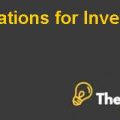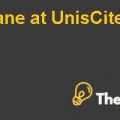
TATA SIMULATION Case Solution
Question 1
Define each type of market structure (monopoly, oligopoly, monopolistic competition, and perfect competition). Be sure to paraphrase information in your own words, and cite your sources.
The description of each type of the market structure is as follows:
Monopoly
Monopoly is defined as a market structure where there is a single firm which has no other competitors in the industry. The monopoly company increases the profits by increasing the prices of its products and reducing its output. By doing this, the monopoly firm produces at much higher costs than the competitive firms and produces less than the socially optimum output level.
Oligopoly
An oligopoly market structures where there are just a few firms. If these firms collude with one another, then they drive up their profits by reducing output like monopoly. However, as there are strong inventive for firms to cheat on collusive agreements, they therefore end up competing against one another.
Monopolistic Competition
In this market structure, there are many different competing firms, and all of them have a similar but slightly different product. Production costs are higher in this market structure and lower production costs would have been possible if all the firms produced identical products. However, the consumers in this market benefit from the variety of products.
Perfect Competition
The perfect competition market exists when there are many small firms competing against one another. All firms produce identical products at the minimum cost per unit possible as well as they achieve the socially optimum output level.
Question 2
Describe the competitive advantage/unique resources Quasar Computers possesses in the monopoly market scenario. To this end, describe why intellectual property rights are important in a capitalistic market system. How might a firm hedge against an expiring patent so they can maintain some sort of competitive advantage into the future?
Quasar Computers has a 3 year patent on the production of its optical computers and this has provided the company a competitive advantage as well as it has created an entry barrier for three years against the new entrants. This would protect the company against any competition within the optical computer market. As a result of this patent, the company would be able to yield higher and optimal profits which would be equal to the full amount of the value of Neutron without any control on price by the market (Grant, 2011). The maximum profit could be realized by the company when the marginal cost of Quasar Computers would be equal to its marginal revenue.
The maximization of the profit in the market could be achieved by equating marginal revenue to marginal cost. However, if the marginal revenue is already higher than marginal cost, then profit could be maximized by increasing the production output. Quasar Computers has a competitive advantage and thus, it can achieve a maximum profit in the market if the price per unit is set to $2,550 as shown in exhibit 1 in appendix. At this level, the total production output is $5.3 million, and the total revenue is $13.5 billion which is higher than the total cost of $12.18 billion, yielding a maximum profit of $ 1.29 billion.
Along with this, the intellectual property rights are considered to be important for a private property market because they give a monopoly power to the firm to sell their goods and services and granting of the patents by the governments is also a way to raise money in an economy without imposing a higher tax. In return, the patentee receives the protection from the competition. This is considered as great for the patentee and the state but not for the consumers or competition(Kinsella, 2011). This is the reason that intellectual property has become the largest asset of most of the companies today.............
This is just a sample partial case solution. Please place the order on the website to order your own originally done case solution.












